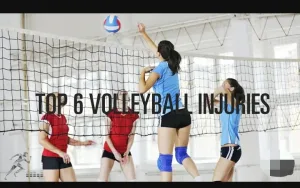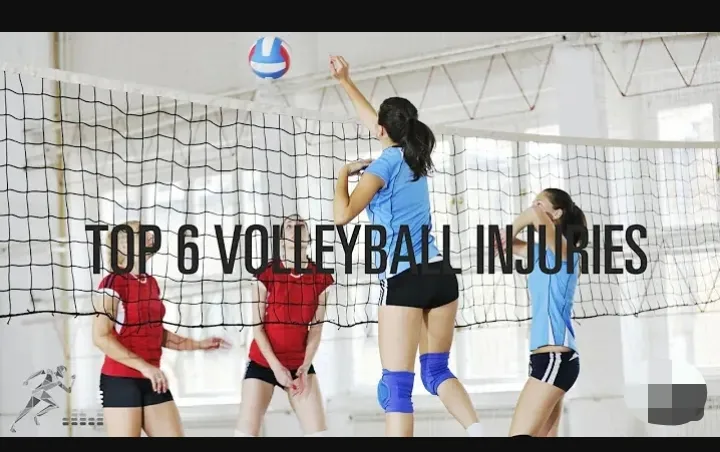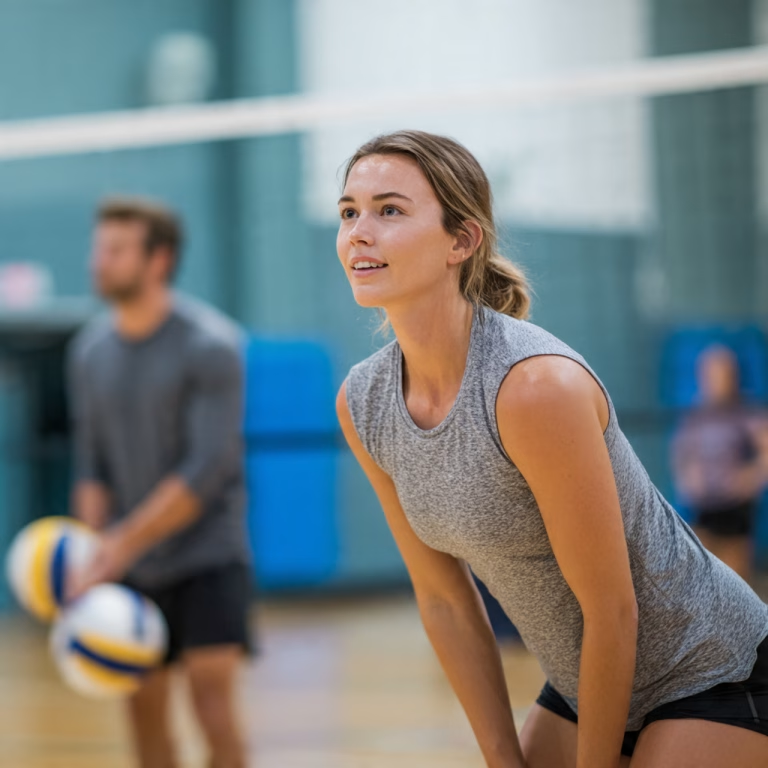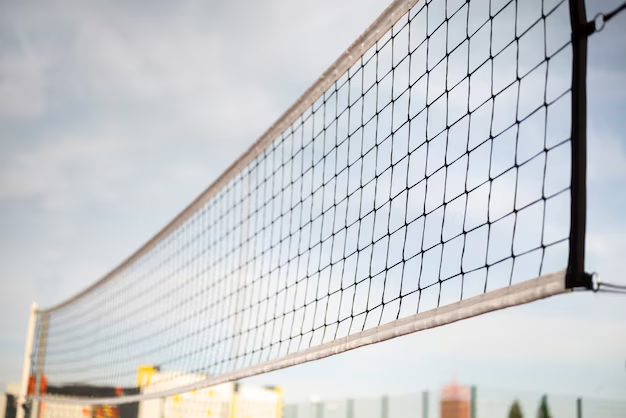VOLLEYBALL INJURIES: PREVENTION AND RECOVERY STRATEGIES
Just like in any other game, injuries are inevitable, so is volleyball. However to prevent an injury, a player must take basic prevention tips so as to stay fit throughout the game.
Although injuries in volleyball are minimal compared to other sports, however since the participation in the game of volleyball is on the rise, hence injuries are likely to increase.
Some people might wonder what causes an injury in volleyball since the opponents are on the other side of the court, however not all injuries are caused by collision. Let’s take a look at what causes injuries in volleyball and how to prevent them.
- Volleyball Nutrition – Best Foods and Eating Habits for Players
- Volleyball Guide for Pregnant Women (Can you play volleyball while pregnant)
Types of Injuries in Volleyball

- Sprains and strains around the ankle.
- Finger injuries such as dislocations usually gotten during serving a ball.
- Shoulder injuries caused due to constant use of the arms.
- Knee injuries caused due to repeated jumping.
- Low back pain due to continuous bending.
- Patellar tendinitis
Causes of Volleyball Injuries
Sometimes, most volleyball injuries are cause due to excessive use of a particular body part which is in turn caused by overtraining.
When a particular body muscle is used, it becomes stronger than other body parts causing an imbalance. These imbalances are what causes the injuries. Below are some of the repetitive movements that causes imbalances.
- Landing
- Rotating the shoulder severally during spikes and serves.
- Jumping
- Bending
Also, a player’s reaction during a game can cause an injury. For example, diving to save a ball or landing in the wrong way can cause an injury due to the impact these activities causes.
Being aware of injuries that are likely to occur can discourage one from playing the game, however it is important to also take note of the preventive measures inorder to minimize the level of injury.
- Basic Skills in Volleyball
- Volleyball Players Positions and Roles Explained
- Top 10 Best Volleyball Players of all Time
- Grass Volleyball Rules 2024: A Comprehensive Guide for Players
Treatment for Volleyball Injuries
- Shoulder: An anti inflammatory drug should be given. Also, athlete should take some rest.
- Ankle: A cold compress should be applied to area of injury and anti inflammatory drug should be given especially if it’s a severe injury.
- Knees: Athlete affected should take a rest. Drugs should be administered if pain is intense.
How to Prevent Volleyball Injuries
- Begin Your Practice With A Warm Up : It is very necessary to always begin your practice with a warm up. This will help prepare your muscles and joints for the game. Warm ups should include stretches and other exercises.
- Put On Protective Gear: The importance of protective gears during a game can never be overemphasized. This will help reduce injuries.
- Get A Good Coach: A Good Coach will teach you the right techniques to use. With the right techniques, athletes will be able to do repeated serves without an injury or even defend their teams effectively.
- Getting Regular Check Ups: It is advised that athletes gets checked from time to time by medical personnel. This will help diagnose any potential problem early which in turn also helps you get an early treatment.
- Learn to Take A Rest: Athletes should learn to a break and rest when needed. Overtraining can lead to injuries, hence it is important to take a rest especially when you feel like your body needs it.
- Maintain Physical Fitness: Always ensure in you are good physical state before the start of the season. Make sure to take exercises on a regular basis. A stretch or yoga exercise is just right for you.
Sometimes, no matter how much we try to prevent an injury, we still end up getting one, hence, the need for a recovery strategy. What are the recovery steps that can be taken after getting an injury on the court? Let’s find out .
Recovery Strategies after Getting a Volleyball Injury
- Take A Break: The first thing to do after getting an injury during a game is to take a break. Choosing to continue in the game will only cause more harm than good, therefore, a break is needed.
- Improve Your Nutrition: It is required that athletes take a diet high in calories. This will provide them the energy they need to play well in a game.
- Stretch When Needed: Stretches are crucial for athletes especially volleyball players. Hence, it is advised that you incorporate stretches into your regular routine as this will help your balances and also help ease the pain gotten from several trainings.
- Reduce Your Training Intervals: Healing from an injury usually takes time, therefore athletes are advised to reduce the number of times they train especially after an injury.
- Stay Hydrated: Drink plenty of water at all times. It is important to stay hydrated as lack of enough water can cause dehydration which can affect your recovery process.
It is necessary to follow these steps especially if you are one who loves the game wholeheartedly. Following these tips will help you recover quickly and get you back to the game in no time.
Summary/Conclusion
Volleyball injuries, though relatively uncommon, can still occur among players, particularly young athletes.
These injuries often involve the shoulders, knees, ankles, and fingers due to the repetitive jumping and motions involved in the game.
Common volleyball injuries include rotator cuff tendinitis, finger fractures, ankle sprains, and knee injuries such as jumper’s knee and ACL tears.
To prevent these injuries, proper precautions should be taken both on and off the court. This includes pre-season conditioning to strengthen key muscles like the shoulders, legs, and gluteal muscles, as well as warming up before games and practices with dynamic exercises.
Wearing appropriate athletic shoes with ankle support and knee pads can help protect against ankle sprains and finger injuries. Additionally, communication with teammates is crucial to avoid collisions during play.
To prevent overuse injuries, young players should prioritize rest between games and seasons and consider participating in other sports to avoid strain on specific muscle groups.
It’s important to maintain a balance between competition and enjoyment to prevent burnout and keep volleyball fun for players of all ages.
Regular monitoring by an athletic trainer can also help identify and address potential injury risks before they escalate.




